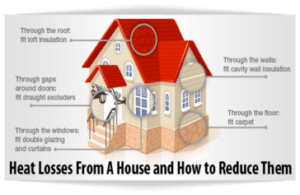Table of Contents
ToggleTop Signs Your Home Needs New Insulation
A Comprehensive Guide for UK Homes
Maintaining proper insulation in your home is essential for energy efficiency, comfort, and cost savings. Over time, insulation can degrade, leading to various issues affecting your home’s overall performance. In this guide, we’ll explore the top signs that indicate your UK home may need new insulation, supported by real-life case studies and relevant facts.
-
Rising Energy Bills
One of the most noticeable signs that your insulation may be failing is a sudden increase in energy bills. In the UK, where heating is a significant component of energy consumption, poor insulation can result in substantial heat loss.
Case Study: John’s Story John, a homeowner in Lowestoft, noticed a 30% increase in his energy bills over a few months. An energy audit revealed that his insulation had deteriorated significantly, contributing to increased heating costs.
Fact: According to the UK government’s Energy Saving Trust, proper insulation can save homeowners up to £240 per year on heating costs.
-
Uneven Temperature Distribution
If certain areas of your UK home are consistently colder or warmer than others, it could be a sign of inadequate insulation. Inconsistent temperature distribution indicates that your insulation may be insufficient in certain areas, allowing thermal energy to escape.
Case Study: Sarah’s Dilemma Sarah noticed that her bedroom was consistently colder than the rest of her house. An inspection revealed that the insulation in the attic above her room had degraded, leading to uneven temperature distribution.
Fact: Well-insulated UK homes maintain more consistent temperatures throughout, providing greater comfort and reducing the need for excessive heating.
-
Visible Signs of Wear and Tear
A visual assessment of your UK insulation is crucial. If you observe sagging, discoloration, or if the insulation material is crumbling, it’s a clear indication that it’s time for an upgrade.
Case Study: Mark’s Discovery Mark, a diligent homeowner, inspected his loft and found that the insulation material was disintegrating. This not only affected its thermal efficiency but also posed potential health risks.
Fact: Deteriorated insulation in the UK can lead to compromised indoor air quality as particles are released into the air.
-
Ice Dams in Winter
In colder UK climates, ice dams on the roof can signal insulation problems. Inadequate insulation allows warm air to escape, causing snow to melt and refreeze at the roof’s edge, forming ice dams.
Case Study: Emma’s Ice Dam Challenge Emma experienced recurrent ice dams on her roof, causing water damage to her home. An inspection revealed that insufficient loft insulation was contributing to the problem.
Fact: Proper loft insulation helps maintain consistent roof temperatures, preventing the formation of ice dams in the UK.
Conclusion
Regularly assessing the condition of your UK home’s insulation is crucial for maintaining its energy efficiency and overall comfort. If you’ve observed any of the signs mentioned above, it’s advisable to consult with insulation professionals for a thorough inspection and potential upgrades. Investing in new insulation not only improves your home’s performance but also contributes to long-term energy savings and environmental sustainability.
Remember, a well-insulated UK home is a comfortable, cost-effective, and environmentally friendly home.




